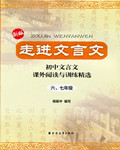题目内容
In the US and Britain, the slogan around colleges was “Save water. Shower with a friend.” Now, Wuhan University has come up with another system for the campus bathhouse. It charges students for the amount of time in a shower. Before entering the bathhouse, students pay for the amount of time they want in the shower with cash or their student ID card. The clock starts ticking the minute the tape is turned on. It pauses when a button is pressed for soap. An integrated circuit (IC) card reader at each tap shows the time. No money, no water. The benefits of the new system can be seen with the old system, which charged 1 Yuan for each person regardless of time in the shower. The university used about 320 tons of water daily under the old system, but only 160 tons now.
Many students use the new system but opinions on it are divided. Some students say it is bad because bathing had become a sort of race. Many people using it for the first time are not sure how long they need to shower. Some might be embarrassed if their time is up and they’re still covered in soap. They have to ask the bathhouse worker to help them buy extra time.
“It’s a flaw in the system that you can not buy extra time on the ID card,” said Ren, a freshman in Wuhan University. The university is also considering some students’ suggestions that they be allowed to pay after they’ve finished the shower. Not surprisingly, some are complaining about losing the hour shower. But many students say the move helps them develop a water-saving sense.
Without the time limits, most students tended to shower for 30 to an hour in the bathhouse.
Some even used the hot water to wash their clothes. “In my experience, 10—20 minutes is enough,” said Dai Zhihua, a third-year student who usually takes 8 minutes.
A similar system has been installed in other universities. Shanghai Normal University introduced it at its Fengxiang Campus in September. The bathing fee there is 0.2 Yuan per minute. One male student responded by setting a record with a two-minute shower.
1.According to the passage, which of the following is NOT true?
A. Students buy the time of their showers.
B. The clock times the student’s bathing except when the bather pauses for soap.
C. If money runs out, there will be no water.
D. Having finished bathing, the student has to pay for it.
2.The underline word “flaw” (Paragraph 3) most probably means __________.
A. fault B. advantage C. pity D. perfection
3.Since the new system has performed, __________ of water can be saved.
A. a quarter B. one third C. one half D.two thirds
4.It can be inferred from the passage that __________.
A. the new operation can raise students’ environmental awareness
B. the new operation can solve the water crisis
C. a similar operation has been set in other universities
D. the university has saved a lot of water by using the new system
5.In which column can you find this passage?
A. Culture. B. Society. C. Campus Life. D. Lifestyle.
1.D
2.A
3.C
4.A
5.C
【解析】试题分析:文章大意:本文是讲武汉大学为增加学生节约用水的意识而对澡堂采取的一项新措举:洗澡按时计费。
1.D细节判断题。由第一段Before entering the bathhouse,students pay for …可知,学生是在洗澡前付款的;而第三段的some students’ suggestions that they be allowed to pay after they've finished the shower只是值得考虑的一个建议。说明D不正确,所以选择D。
2.A词义猜测题。根据后文you can not buy extra time on the ID card,说明flaw肯定为“缺陷,纰漏”之意,即fault“错误;缺陷”。
3.C细节理解题。由第一段最后一句的两个数字进行比较The university used about 320 tons of water daily under the old system, but only 160 tons now.可得出答案C、水能节约一半。
4.A推理判断题。由文章的前两句得知colleges这种新的措施是想让students 增强节
约用水的意识。但并不能说解决水危机问题,所以答案选择A。
5.C猜测题。猜文章的出处,本文主要介绍大学就洗澡用水问题采取的一种新举措。所以应出现于校园生活栏目,选择C。
考点:考查日常生活类短文阅读

 字词句篇与同步作文达标系列答案
字词句篇与同步作文达标系列答案 走进文言文系列答案
走进文言文系列答案 Because
of the financial crisis in the US and UK, college students are beginning to
struggle to find ways to pay their tuition fees and accommodations.
Because
of the financial crisis in the US and UK, college students are beginning to
struggle to find ways to pay their tuition fees and accommodations.